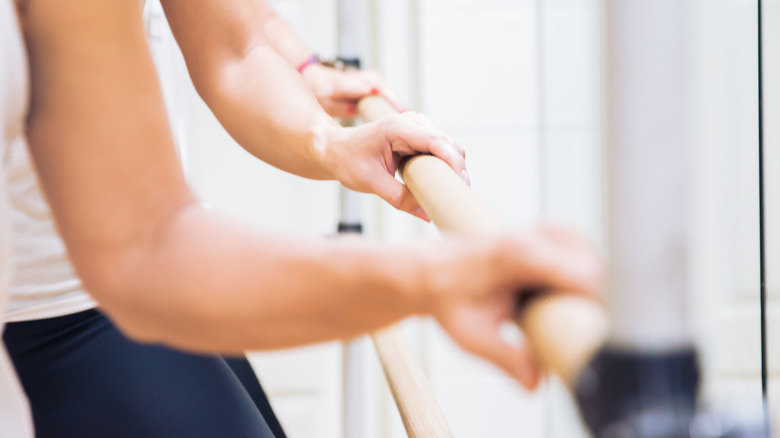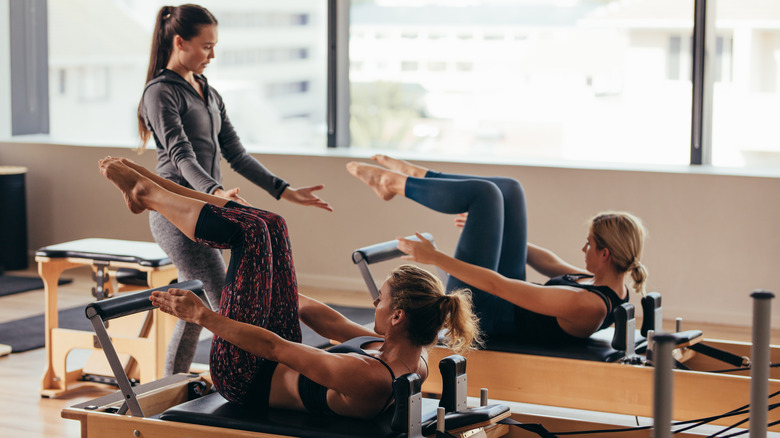The Real Difference Between Pilates And Barre Workouts
More people than ever are focusing on wellness. This has led to a boom in the number of fitness classes available, making it easy for almost everyone to find something they enjoy. For some, however, the choices can be overwhelming. And when it comes to specific fitness styles like Pilates and barre, it can be hard to tell what the real difference is or which one is the best fit.
Pilates was created by German-born Joseph Pilates in the early 1900s. He and his wife immigrated to American in 1926 where they settled in New York City. They opened a Pilates studio where, despite a loyal group of practitioners, the practice went largely unnoticed. It didn't become popular until the last few decades, though Pilates himself credited his lifelong health to his fitness practice, as documented by the Pilates Method Association which is an American-based organization dedicated to teaching Pilates instructors.
Barre, on the other hand, was created by Lotte Berk in 1959. Berk, an accomplished ballerina, had to undergo physical therapy when she was injured while dancing. Over time she realized that she could combine her physical therapy work with the dance she had trained in for so long. She opened her first studio in 1959 which led to a student of hers — Lydia Bach — bringing Barre to America in 1971 where it quickly morphed and gained in popularity. Today there are numerous barre variations, all sharing the same focus as the original.
Key differences between barre and Pilates
The differences between Pilates and barre run deeper than the origins of the workouts, however. And the real differences can affect which class someone chooses.
If the biggest concern is equipment costs, then barre might be better than Pilates. While many places offer mat-based Pilates classes — including online options — these classes often still require a Magic Ring or a Pilates ball. Barre, by contrast, requires common hand weights and resistance bands (via The Everygirl). And, yes, a barre. Of course Pilates classes that go beyond the mat may also require specialized machines, further increasing equipment costs unless the class is held in a stocked gym.
The most important difference between Pilates and barre, however, is their focus. Pilates focuses on posture. This means that most of its workouts focus on the abs, pelvic floor, and all the small muscles that go into maintaining proper posture. Pilates still affects the arms, legs, and glutes since many of the motions uses the full body, but the core sees most of the impact.
Barre, by contrast, focuses on the legs and glutes. It is designed to strengthen and tone muscles without adding a lot of bulk. And while it uses both the core and the arms, most of the burn will be felt in the lower body. It was designed by and for dancers, initially, and that emphasis has remained.
Both workouts focus on important areas. And there is no rule against mixing and matching. But knowing the differences between the two makes it easier to focus on the areas you want to improve before you dive into two specialized workout styles.


